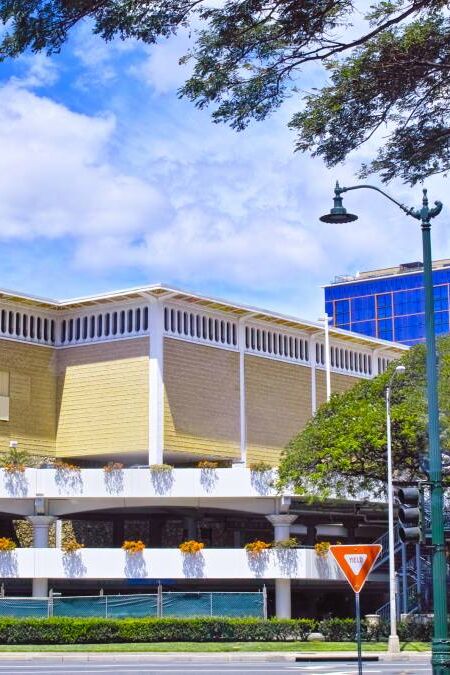Did you know that the Imiloa Astronomy Center houses one of the world’s most advanced planetariums, capable of simulating the night sky with stunning accuracy? Nestled in Hilo, Hawaii, this cutting-edge center bridges the gap between ancient Polynesian navigation and modern astronomical research, offering a unique blend of science and culture. In this article, you’ll discover everything you need to know to make the most of your visit, from interactive exhibits and educational programs to practical tips and insider insights, ensuring an unforgettable experience under the stars.
Highlights
- Experience captivating shows in the state-of-the-art planetarium, which offers a 3D journey through the universe, showcasing the stars, planets, and galaxies.
- Learn about the ancient Polynesian navigators who used the stars to voyage across the Pacific.
- Enjoy hands-on, interactive displays that make learning about astronomy fun and engaging for visitors of all ages.
- Participate in educational programs and workshops designed for various age groups.
- Take a stroll through the native gardens that surround the center.
- Visit the on-site gift shop to find unique souvenirs and educational materials.
History
A Vision Takes Root (Early 2000s)
The story of the ʻImiloa Astronomy Center of Hawaii began in the early 2000s with the vision of George Jacob, the founding Director. Jacob identified the need for a place where the rich astronomical traditions of Hawaiian culture could be showcased alongside the groundbreaking research happening atop Maunakea. This vision set the foundation for what would become a unique blend of cultural preservation and scientific exploration.
From Dream to Reality (Mid-1990s to 2006)
The idea for the center gained significant momentum in the mid-1990s. A collaborative effort between educators, scientists, and community leaders led to the development of comprehensive plans for an educational facility. U.S. Senator Daniel Inouye was instrumental in securing NASA funding, which was crucial for bringing this vision to life. After years of planning and development, the ʻImiloa Astronomy Center officially opened its doors to the public in February 2006.
Intertwining Narratives: Culture and Science
The core concept of the ʻImiloa Astronomy Center revolves around intertwining narratives. Its exhibits and shows delve into both Hawaiian cultural perspectives on astronomy and the cutting-edge research conducted at the Mauna Kea Observatories. Visitors can explore how Hawaiians used celestial bodies for navigation and gain a deeper understanding of the significance of Maunakea as a sacred place.
Architecture Reflecting the Land
The center’s architecture is a story in itself. The design features three large, titanium-clad cones that represent the majestic volcanoes Mauna Kea, Mauna Loa, and Hualālai, which dominate the island’s landscape. Additionally, the extensive gardens showcase native and endemic Hawaiian plants, along with “canoe plants” brought by the Polynesians on their voyages, providing a living connection to the cultural and natural history of Hawaii.
A Testament to Science Education and Cultural Preservation
The ʻImiloa Astronomy Center stands as a testament to Hawaii’s commitment to science education and cultural preservation. It offers visitors a unique opportunity to learn about the universe through the dual lenses of science and Hawaiian traditions, making it a must-visit destination for anyone interested in astronomy, culture, and the natural world.
Exhibits and Attractions
Interactive Exhibits
At the Imiloa Astronomy Center, visitors can immerse themselves in captivating exhibits like “Origins,” which delves into the birth of the universe, and “Voyages,” exploring the rich history of Polynesian navigation. These interactive displays offer hands-on activities that engage visitors of all ages, making complex scientific concepts accessible and exciting.
Planetarium Shows
The state-of-the-art planetarium at Imiloa hosts a variety of shows daily, ranging from explorations of our solar system to journeys through distant galaxies. With its advanced projection technology, the planetarium provides an immersive experience that brings the night sky to life, offering a unique way to learn about astronomy and space exploration.
Garden Tours
The native Hawaiian garden at Imiloa is a living exhibit showcasing the diverse flora of the islands. Guided tours provide an educational journey through the garden, highlighting the significance of these plants in Hawaiian culture and their ecological roles. Visitors can enjoy a peaceful walk while learning about the botanical heritage of Hawaii.
Educational Programs
Workshops and Lectures
Imiloa Astronomy Center offers a robust schedule of educational programs, including workshops and lectures designed for both adults and children. These programs feature notable guest speakers who cover a wide range of topics, from cutting-edge astronomical research to traditional Hawaiian celestial navigation, enriching the visitor experience with in-depth knowledge.
School and Group Visits
Special programs tailored for school and group visits make the Imiloa Astronomy Center an ideal educational destination. These programs include guided tours and interactive sessions that align with educational standards, providing a valuable learning experience outside the classroom. Information on booking and group rates is readily available to ensure a smooth and enriching visit.
Visitor Information
The Imiloa Astronomy Center is open Tuesday through Sunday from 9 a.m. to 4:30 p.m., offering ample time to explore its numerous attractions. Admission fees provide full-day access to the Exhibit Hall and Planetarium, with prices set at $19 for adults, $12 for children aged 5-12, and $17 for seniors aged 65 and older. Kama’āina (residents) and military personnel enjoy special discounts, making it more accessible for all. On-site amenities include the Sky Garden Restaurant, where visitors can enjoy a meal with a view, and a gift shop offering a variety of souvenirs to commemorate their visit.
Tips for Visiting
- Arrive early to maximize your time at the center.
- Check the schedule for planetarium shows and plan around them.
- Bring a camera for capturing exhibits and the garden.
- Wear comfortable walking shoes for exploring the garden.
- Check the weather forecast and dress appropriately.
- Bring sunscreen and hats for the outdoor garden tours.
- If visiting with a group, book in advance to secure group rates and guided tour options.
- Look out for special events or festivals hosted by the center.
- Sign up for workshops or lectures that align with your interests.
Best Times to Visit
The best times to visit the Imiloa Astronomy Center are during weekdays in the mid-morning to early afternoon when the center is less crowded, allowing for a more relaxed and immersive experience. Visiting during these times also provides the opportunity to participate in multiple planetarium shows and educational programs without the weekend rush. Additionally, planning your visit around special events or workshops can enhance your experience, offering unique insights and activities that aren’t available on regular days.
Nearby Attractions
While visiting the Imiloa Astronomy Center, take the opportunity to explore other nearby attractions in Hilo. Just a short drive away, you can find the serene Liliuokalani Gardens, a beautifully landscaped Japanese garden perfect for a peaceful stroll. For history enthusiasts, the Pacific Tsunami Museum offers fascinating exhibits on the region’s seismic activity and tsunami history. Additionally, the Hilo Farmers Market, bustling with local vendors, provides a vibrant taste of local culture, offering everything from fresh produce to handmade crafts. These nearby spots make for a well-rounded and enriching day trip.
Frequently Asked Questions (FAQs)
The Imiloa Astronomy Center is a world-class museum and planetarium located in Hilo, Hawaii, dedicated to astronomy and Hawaiian culture.
Admission fees vary: $19.50 for adults, $12 for children (5-12), and free for children under 5.
Exhibits at the Imiloa Astronomy Center include interactive displays on astronomy, the history of Hawaiian navigation, and the connection between Hawaiian culture and the stars.
Yes, the Imiloa Astronomy Center features a state-of-the-art planetarium that offers daily shows about astronomy and Hawaiian legends.
Absolutely, the Imiloa Astronomy Center offers engaging and educational activities suitable for visitors of all ages..
Yes, guided tours are available and can be booked in advance, providing a deeper understanding of the exhibits and the Hawaiian cultural perspective on astronomy.
How to Get There
By Car
To get to the Imiloa Astronomy Center by car, start by heading towards the University of Hawaii at Hilo campus. From downtown Hilo, take Waianuenue Avenue and turn right onto Komohana Street. Continue on Komohana Street until you reach Nowelo Street, then turn left. The Imiloa Astronomy Center is located at 600 Imiloa Place, near the university campus. There is ample parking available on-site for visitors.
By Bus
If you prefer to use public transportation, you can take the Hele-On Bus. From the Mo’oheau Bus Terminal in downtown Hilo, board the bus route that goes towards the University of Hawaii at Hilo. Inform the bus driver that you wish to get off at the Imiloa Astronomy Center. The nearest bus stop is located on Nowelo Street, a short walk from the entrance to the center. The ride offers a convenient and affordable option for those without a personal vehicle.
Reach for the Stars at Imiloa
The Imiloa Astronomy Center offers a unique fusion of ancient Polynesian navigation and cutting-edge astronomical science, with captivating exhibits, state-of-the-art planetarium shows, and educational programs for all ages. From interactive displays to serene garden tours, the center promises an enriching and memorable experience. Plan your visit today and embark on a journey through the cosmos, then share your discoveries and stories with fellow travelers. For more information and to start planning your adventure, visit the Imiloa Astronomy Center.




